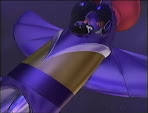
Meteor Crater was discovered in 1871 by a man named Franklin who was a scout for General Custer. For years it was thought to be a volcanic crater until a shepherd found iron-nickel meteorites there in 1886. However, the shepherd thought that he had found silver and did not report his discovery for 5 years.
 In 1902 Barringer purchased the land containing the crater and began looking for the main body of the meteor that had created Meteor Crater. At first he started drilling at the bottom of the crater, but after a wile he reasoned that the meteor had come in at an angle and the surviving meteorite was located under the south rim. Sadly 26 year of searching, Barringer died without finding his meteorite.
In 1902 Barringer purchased the land containing the crater and began looking for the main body of the meteor that had created Meteor Crater. At first he started drilling at the bottom of the crater, but after a wile he reasoned that the meteor had come in at an angle and the surviving meteorite was located under the south rim. Sadly 26 year of searching, Barringer died without finding his meteorite..JPG) Today, the common theory in the scientific community about how the Meteor Crater was formed is this: a huge meteoroid 150 feet across entered the Earth's atmosphere at 26,000mph and slammed into the desert plain of Arizona. On its trip through the atmosphere, the half a million ton projectile lost little speed and less the one percent of its mass. The result was tremendous impact releasing more energy then a 20 megaton atomic bomb. During the impact, 175 million tons of rock was flung out of the creator and the surrounding bedrock was uplifted over 150 feet. Most of the meteorite was liquidized in the process and solidified in small spheres after penetrating the crater's floor. The remaining chunks of meteorite where hurled over the rim and landed in the debris field surrounding Meteor Crater. Today, the largest piece of meteorite discovered is only about three feet across and is on display at the Meteor Crater Visitor Center.
Today, the common theory in the scientific community about how the Meteor Crater was formed is this: a huge meteoroid 150 feet across entered the Earth's atmosphere at 26,000mph and slammed into the desert plain of Arizona. On its trip through the atmosphere, the half a million ton projectile lost little speed and less the one percent of its mass. The result was tremendous impact releasing more energy then a 20 megaton atomic bomb. During the impact, 175 million tons of rock was flung out of the creator and the surrounding bedrock was uplifted over 150 feet. Most of the meteorite was liquidized in the process and solidified in small spheres after penetrating the crater's floor. The remaining chunks of meteorite where hurled over the rim and landed in the debris field surrounding Meteor Crater. Today, the largest piece of meteorite discovered is only about three feet across and is on display at the Meteor Crater Visitor Center.Watch an animation of Meteor Crater being created!
Sources:
www.meteorcrater.com
World Book Encyclopedia, 1997 Edition
Meteor Crater Visitor Center
All photos courtesy of www.meteorcrarer.com


